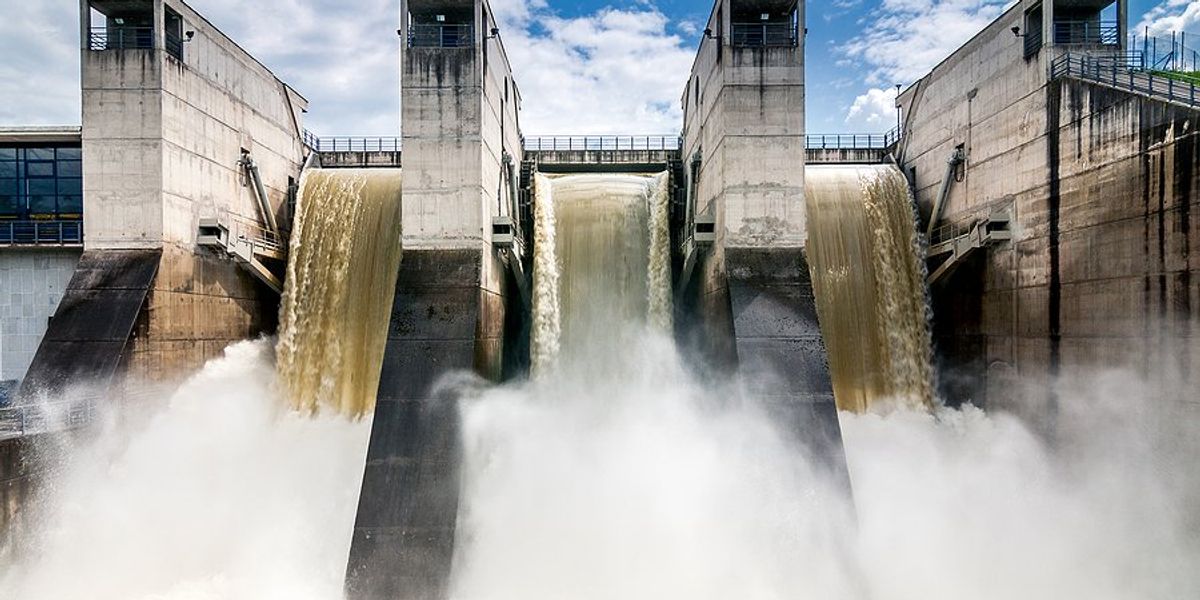ice
New study reveals Arctic sea ice complicates shipping routes
Melting sea ice in the Canadian Arctic is paradoxically making shipping routes more hazardous due to the movement of centuries-old thick ice, according to recent research.
In short:
- Melting thinner ice is releasing thick, old ice, creating choke points in the Northwest Passage.
- The study, reflecting actual ship traffic from 2007-2021, shows increased risk on key routes, despite longer shipping seasons in some areas.
- Local coastal communities face increased food and supply costs due to shortened shipping seasons and reliance on costly airlifts.
Key quote:
"It's true that the Arctic sea ice in general is showing significant retreat and melting, and will continue to do so, but our new study shows that it's not a simple story."
— Alison Cook, Scottish Association for Marine Science
Why this matters:
Thick ice obstructing Arctic shipping routes poses economic and logistical challenges for coastal communities, increasing their dependence on expensive airlifts. Additionally, this complicates future plans for using the Northwest Passage as a reliable trade route, affecting global shipping logistics.
Phoenix uses ice immersion to combat heatstroke as temperatures soar
Phoenix firefighters are employing ice immersion techniques to treat heatstroke victims amid the season's first heat wave in the Southwest.
In short:
- The Phoenix Fire Department is using cold water immersion to treat heatstroke victims during transport to hospitals.
- This method, familiar to marathon runners and military personnel, can lower body temperatures rapidly and improve survival rates.
- Phoenix has also introduced overnight cooling stations as part of new measures to combat rising temperatures and heat-related deaths.
Key quote:
“We’ve been seeing a severe uptick in the past three years in cases of severe heat illness.”
— Dr. Paul Pugsley, medical director of emergency medicine with Valleywise Health
Why this matters:
As temperatures in Phoenix reach extreme highs, innovative treatments like ice immersion are crucial for preventing heat-related deaths. Heatstroke, a severe form of heat illness, occurs when the body's temperature regulation fails and internal temperatures rise dangerously high. The condition can lead to organ damage or even death if not treated swiftly. Traditional cooling methods, such as fans and misting, often fall short when faced with the rapid onset of heatstroke symptoms.
Venezuela's last glacier disappears, marking an environmental milestone
Venezuela has lost its final glacier, La Corona, making it the first country in the Andes without any glaciers, amid rising concerns over global warming effects.
Ana Vanessa Herrero and Matthew Hay Brown report for The Washington Post.
In short:
- La Corona's size shrank dramatically from more than 1,100 acres to less than five, leading scientists to declare its end as a glacier.
- Despite government attempts to preserve it using geothermal covers, experts deemed such interventions unfeasible and potentially harmful.
- The loss marks a significant shift in Venezuela's ecological and cultural landscape, previously home to multiple glaciers.
Key quote:
"Our tropical glaciers are disappearing quickly since the Seventies. Now people are feeling the absence."
— Alejandra Melfo, astrophysicist at the University of the Andes
Why this matters:
The loss of La Corona extends beyond symbolic significance; it is sounding a dire alarm for both ecological balance and water resource management. Glaciers, often referred to as nature’s reservoirs, slowly release water into rivers and lakes, supporting both human activities and the natural ecosystems throughout the year. Their disappearance can lead to water shortages that affect millions, complicating efforts to grow crops, generate hydroelectric power, and maintain natural habitats.
Gray whales face a tough road ahead after a significant die-off
A recent study suggests the dramatic increase in gray whale deaths along the Pacific Coast over the last six years may be due to a critical shortage of food in their Arctic feeding grounds.
In short:
- The gray whale population has suffered a dramatic decline, with more than 700 whales found dead since 2018, raising questions about their survival.
- Researchers pinpoint a drop in Arctic and sub-Arctic food supplies as a primary cause, though the exact reasons for this scarcity remain unclear.
- This die-off provides a crucial data point for understanding and potentially addressing the challenges faced by marine life in changing oceanic environments.
Key quote:
"We didn’t find any evidence of anything that looks like an infectious disease. There were no telltale signs of infection of any kind."
— Padraig Duignan, pathologist at the Marine Mammal Center
Why this matters:
Gray whales along the Pacific Coast have experienced significant die-offs, tentatively attributed to changing Arctic conditions and a decline in their primary food sources. Some researchers have observed a direct correlation between these die-offs and both the levels of Arctic sea ice and the biomass of benthic amphipods, a key food source for the whales.
Unpredictable winters put northern Canada's vital ice roads at risk
Erratic winter weather brings Manitoba's northern communities to the brink of supply emergencies as vital ice roads melt away.
In short:
- Warm weather and rain have delayed and deteriorated the construction of vital winter roads in Manitoba, causing First Nations to declare a state of emergency due to a shortage of crucial supplies.
- Climate change has led to a reduction in the winter road-building season, threatening the transportation of goods in northern communities that rely on these routes for essentials like fuel and medical supplies.
- As northern temperatures rise significantly faster than the global average, communities and road builders grapple with increasingly unstable conditions that disrupt the annual supply routes.
Key quote:
“The winter road season should be well underway, but temperatures remain unseasonably warm, making them extremely dangerous and unsafe to use."
— Nishnawbe Aski Nation Grand Chief Alvin Fiddler
Why this matters:
Ice roads, which are temporary routes laid over frozen bodies of water or on land covered in ice and snow, serve as vital lifelines for remote communities and industries (like mining and oil extraction) by providing access to supplies, equipment, and emergency services during the winter months. The effects of climate change, including warmer temperatures and erratic weather patterns, present several risks and challenges for these ice roads.
As winter erodes, the 'Science Guy' is hopeful science will soon return to public policy. Let's hope he's right.
Warm winter results in Great Lakes ice scarcity, affecting ecosystem
An unusually mild winter has left the Great Lakes virtually ice-free, prompting scientists to investigate the potential ecological consequences of this anomaly on regional ecosystems.
In short:
- Michigan Tech University biologists' study cut short due to insufficient ice for landing planes on Lake Superior.
- Iceless Great Lakes could lead to warmer waters, affecting fish populations, and increasing algae blooms and shoreline erosion.
- The lack of ice presents challenges and opportunities for fisheries, with varying effects on commercial operations.
Key quote:
“There’s just no way you can predict how an ecosystem is going to respond to the large-scale changes we’re looking at.”
— Trista Vick-Majors, assistant biology professor at Michigan Tech
Why this matters:
The health implications of these environmental shifts are significant, potentially altering fish populations crucial for diets and local economies. This trend is a microcosm of broader climate change issues, underlining the urgency of understanding and adapting to these evolving patterns.
Be sure to read: It's not weather – it's climate disruption.
Arctic trees multiply as sea ice retreats, signaling an environmental shift
In the Arctic, the expansion of white spruce is accelerating due to increased snowfall linked to sea ice loss, presenting new climate challenges.
In short:
- White spruce trees are encroaching on Alaskan tundra previously too harsh for their growth, exacerbated by the Arctic warming rate which is significantly higher than the global average.
- This 'Arctic greening' alters the local albedo effect, where darker tree areas absorb more sunlight, contributing to permafrost thawing and the potential release of greenhouse gases.
- Research indicates that decreased sea ice leads to more evaporation and snow, which aids young spruce survival, facilitating the northward spread of boreal forests.
Key quote:
"Once it gets to be about waist high, it's going to live. It's the little babies that don't survive."
— Roman Dial, ecologist at Alaska Pacific University
Why this matters:
Increased tree coverage in the Arctic could intensify warming trends and contribute to the escalating release of greenhouse gases from permafrost.
Arctic shorebirds are experiencing climate-related changes as well: The daily rate of eggs stolen from shorebirds' nests in the Arctic is three times higher than it was 70 years ago.



















